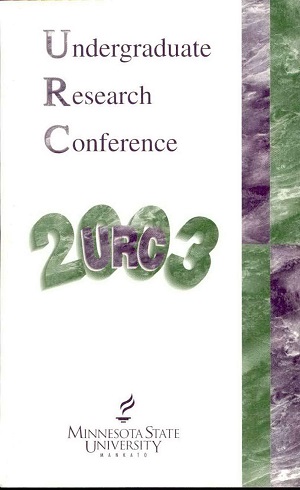Physical Activity Awareness Training: Interactive Vs. Automated
Location
CSU
Student's Major
Family Consumer Science
Student's College
Allied Health and Nursing
Mentor's Name
Sarah Klammer
Mentor's Department
Computer Information Science
Mentor's College
Science, Engineering and Technology
Second Mentor's Name
Martha Lindberg
Second Mentor's Department
Computer Information Science
Second Mentor's College
Science, Engineering and Technology
Description
Our nation is experiencing a critical rise in obesity, a result of leading sedentary lifestyles, which is increasing the incidence of health related issues. Fitness and nutrition training has been implemented in classrooms on the campus of Minnesota State University Mankato in order to educate individuals about the proper amounts of physical activity that are proven to decrease or eliminate health risks. The purpose of this research project was to compare educational techniques used to instruct students about the proper fitness guidelines. The students were given a pre-test used to determine their knowledge about physical activity. Following the pre-test, a slide presentation was taught via interactive instruction or automated instruction. The posttest was then used to compare which method of education was more beneficial in presenting students with the materials they need to make healthier decisions about physical activity.
Physical Activity Awareness Training: Interactive Vs. Automated
CSU
Our nation is experiencing a critical rise in obesity, a result of leading sedentary lifestyles, which is increasing the incidence of health related issues. Fitness and nutrition training has been implemented in classrooms on the campus of Minnesota State University Mankato in order to educate individuals about the proper amounts of physical activity that are proven to decrease or eliminate health risks. The purpose of this research project was to compare educational techniques used to instruct students about the proper fitness guidelines. The students were given a pre-test used to determine their knowledge about physical activity. Following the pre-test, a slide presentation was taught via interactive instruction or automated instruction. The posttest was then used to compare which method of education was more beneficial in presenting students with the materials they need to make healthier decisions about physical activity.



